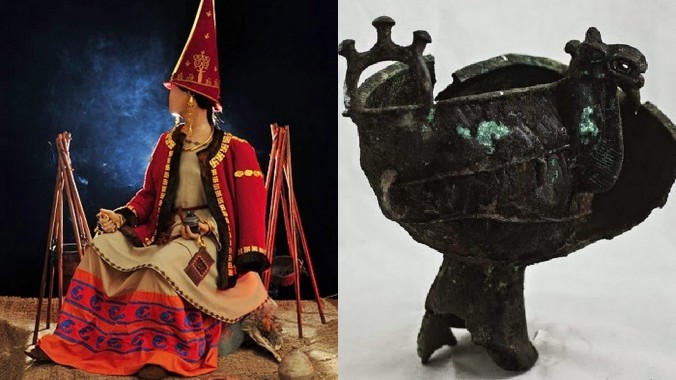Article by
“I’ve been doing a lot of thinking about witches. Not just because top ten lists of hot tv witches and sexy Halloween selfies currently swamp my social media feeds, but because my tables and shelves are currently so laden with herbs, plants, berries, phials and bottles that if an inquisitor of old were to enter, I’d find myself quickly tied to the stake. And while this worry seems remote, it’s a plain fact that women in third world countries are still hunted down, tortured and set aflame for the crime of witchcraft.
Sure, the witch is emerging from the world of taboo and shadows onto the world stage. Sure, she’s being touted as a feminist icon
– a “powerful feminine model free from male influence or ownership”.
But I’m not so sure. Because how can it be that the witch, once
associated with everything transgressive and beyond the realm of
normative society, is now so trendy and positively mainstream? Is it really a feminist step forward that W magazine declared Fall 2016, the season of the witch, replete with pouting models in gothic dresses, chains and black lace underwear?
And while many believe the witch of the
middle ages was a spectre created by the church, I believe she was real.
Yes, many put to death were just ordinary women who practiced folk
magic, herbalism and midwifery, but many were powerful spiritual leaders
of the indigenous, animist faith traditions of the old world – and
their magic was earned through a lifetime of spiritual discipline spent
in communion with nature.
And I worry her make-over into nubile
fashion siren not only obscures this history, but her true relevance as a
role model to us today. One that if resurrected, would be just as subversive and dangerous to the powers that be.
Today the witches tall black hat and burbling cauldron
have become icons of Halloween kitsch, but they were once hallowed items
of the holy women and priestesses, the healers and herbalists, the
oracles and diviners of old Europe. Their conical hats and cauldrons
date back to the 2nd Millennium BCE and were connected to the female shamans of the Indo-European peoples.

Their cauldrons (as well as crystal balls and magical
wands) were still being used thousands of years later by the “witte
wieven” or wise women, the sibyls, seers, and female druids of Celtic,
Anglo Saxon, and Norse traditions of the middle ages.
According to Max Dashu, author Witches and Pagans: Women in European Folk Religion,
these “dream-readers, sooth-sayers, and herb-chanters, fire-gazers in
Switzerland, or water-gazers in France and Spain”, practiced “all the
elements of shamanism: chants, prophecy, healing, weather-making powers,
and shapeshifting”. Legends tell of their sacred cauldrons in which
“they simmered mysterious herbs to produce a drink of immortality and
resurrection.”
These women were the guardians of the earth, the
protectors of the sacred groves, lakes and springs, from which they
derived their magical power. And until the middle ages they were highly
respected, sought out and consulted for healing and divination by common
folk, nobility and clergy alike.
But according to Barbara G. Walker ,
it was during the 14th century that the Catholic Church, during its
relentless expansion and appropriation of sacred land, began to
distinguish between witchcraft, perpetrated by women, and sorcery, a
legitimate pursuit of men.
While books on sorcery were condoned well
into the enlightenment, female witches in contrast were said to
“magically injure crops, domestic animals, and people, and in general
“outrage the Divine Majesty”. And thus their religious practices (as described by Dashu)
of “sitting-out” on the land “gazing, listening, gathering wisdom” were
extinguished by a priesthood that sought to bring nature, magic, women
(not to mention their land and property) under male control.

These women did not go easily, or take usurpation of their
holy sites and old ways lightly – it took the Church hundreds of years
to hunt them down. And so it seems likely, at least to me, that the
stereotype of vengeful witch, casting curses and blighting crop, was real,
at least for the church. She must have been the original eco-feminist,
fighting the patriarchy with one of most powerful tools at her disposal,
magic. And the Church took it pretty seriously indeed.”


No comments:
Post a Comment